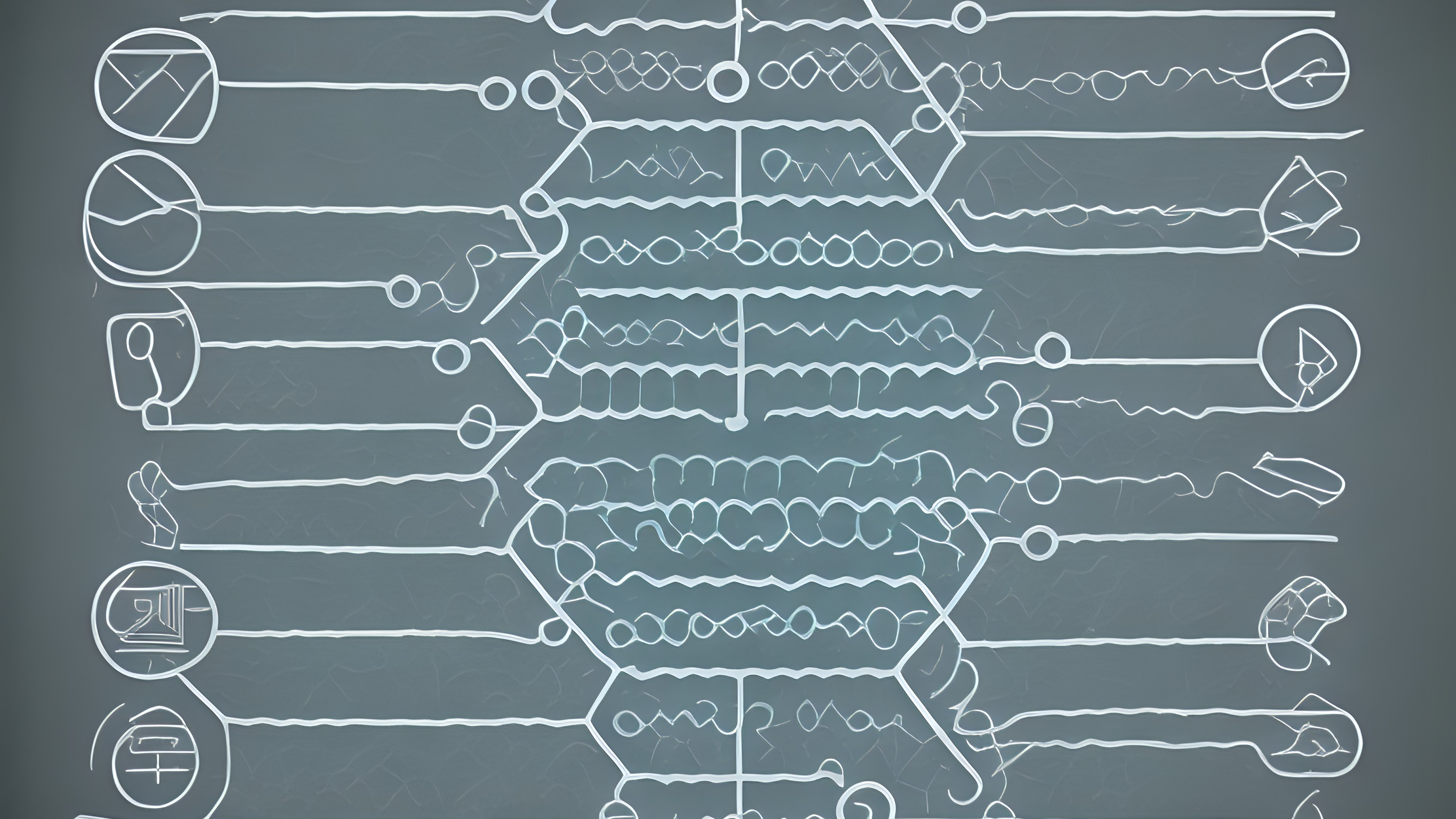

Like a symphony conductor facing a new score, our minds prepare for the complex rhythms of pattern solving.
Puzzle pieces, seemingly disparate and disconnected, await their harmonious union as our brains embark on a cerebral dance of cognition and discovery.
As we unveil the mysteries within each pattern, our neurons fire in exquisite symphony—finding order amidst chaos, creating pathways anew, sculpting connections that enhance not only the game before us but the vast architecture of our mental capabilities.
Puzzles beckon: embrace the challenge.
Pattern recognition is foundational—essential for piecing together the intricacies in a myriad of challenging puzzles.
The human brain is naturally inclined to seek patterns, an evolutionary trait underpinning our ability to solve complex problems and navigate the world.
When engaging with pattern puzzles, it's crucial to identify repetition, symmetry, and sequence, keys that unlock the underlying order and logic hidden within the chaos.
Acknowledging these common motifs can translate into a proficiency for not just puzzles, but for decoding complexities in various aspects of life.
Tackling complex sequence puzzles requires a systematic approach and creative thinking.
Symmetry, progression, and transformation often hold the key to deciphering sequences.
Don’t hesitate to iterate; perseverance refines intuition and leads to unexpected solutions.
Mastering a diverse set of pattern puzzles can sharpen cognitive abilities and offer delightful challenges.
Study each puzzle's distinct rules and patterns to bolster your problem-solving repertoire.
Embracing a variety of puzzles ensures a well-rounded development of your pattern recognition skills.
Engaging with pattern puzzles can significantly sharpen memory retention and improve problem-solving strategies. The stimulation of neurological pathways fosters a stronger cognitive framework, one that adapts and overcomes complex challenges.
Whether it's completing a Sudoku grid or decrypting cryptogram codes, each puzzle category exercises distinct cognitive faculties. In doing so, these games cultivate a mental agility that aids in recognizing patterns, sequencing, and logical reasoning, thus contributing to mental adeptness across various domains.
Pattern puzzles are not mere diversions; they are powerful tools for enhancing mental flexibility and analytical thinking. Regular practice can lead to improved concentration and a greater capacity for abstract thought.
Pattern puzzles serve as an excellent medium for fine-tuning problem-solving skills.
Problem-solving is a dynamic cognitive muscle that strengthens with use.
Persisting through challenging puzzles develops resilience and strategic planning capabilities.
Pattern puzzles demand attention to detail.
Engaging in pattern puzzles generates a unique mental workout. Through the meticulous assembly of pieces and recognition of repeating motifs, one's capacity to focus and retain information is significantly heightened. Moreover, practice in these cognitive arenas lends itself to sharpened attention, aiding in the retention and retrieval of information even outside the realm of puzzling.
Memorization becomes key in pattern recognition.
Solving puzzles cultivates acute mental sharpness - a necessity for precise recollection and concentration. It fosters the kind of focused thinking conducive to deep learning and memory enhancement, which in turn influences cognitive performance across varied tasks and challenges.
Memory and focus are intertwined in puzzling.
Striving to solve intricate patterns not only stimulates intellectual curiosity but also bolsters memory retention and concentration. These skills are vital in today's information-rich environments, where the ability to process and store information efficiently stands as a paramount objective.
Pattern recognition elevates thinking to new heights as we discern order within chaos. It challenges the mind to identify sequences and anticipate outcomes, strengthening critical cognitive muscles.
As we engage in pattern puzzles, we're not just enjoying a game; we're exercising neural pathways responsible for pattern detection and logical reasoning. This form of mental gymnastics enhances our ability to recognize and predict patterns in our everyday experiences.
Advanced pattern recognition requires a blend of memory recall and spatial intelligence. It demands that puzzle enthusiasts remember previous arrangements and visualize future possibilities, marrying memory with strategic foresight.
Immersing oneself in progressively challenging pattern puzzles is akin to training for a marathon. Each new level builds endurance, teaching our brains to understand complex sequences and sharpening our problem-solving acumen.
Ultimately, mastering pattern puzzles can lead to a heightened state of mental agility. In a world brimming with information, such prowess is an invaluable asset, enabling us to navigate the intricate patterns of life itself.
Puzzles can easily become part of our morning routine, much like a stimulating cup of coffee. Just as caffeine awakens the body, a crossword or Sudoku provides a mental jumpstart.
Incorporating puzzles into break times can act as both a diversion and a cognitive boost. Choosing a brainteaser over scrolling through social media encourages productive use of what might otherwise be idle moments.
Even family game nights can evolve into puzzle-solving parties, fostering a love for problem-solving and strategic thinking among all ages.
Engage with puzzles on various digital interfaces.
Interactive platforms offer an expansive selection of pattern puzzles. From classic Sudoku and crossword puzzles to cutting-edge brain teasers, digital realms cater to every level of puzzle enthusiast. Moreover, continual updates mean a never-ending stream of challenges for the avid solver.
Digital options enable puzzle solving anytime, anywhere.
Some platforms invite global competition - where you can pit your skills against others. They also provide difficulty levels tailored to each user, ensuring a personalized puzzle-solving experience with every session.
The latest digital platforms boast sophisticated algorithms that adapt to personal progress. By tracking performance and preferences, they present ever-evolving challenges that ensure your puzzle-solving abilities remain sharp and up-to-date. Access to these platforms only requires a stable internet connection and a thirst for intellectual engagement.
For those who prefer the tactile sensation of pen on paper, a wealth of printable puzzles is at your fingertips. Crosswords, Sudoku, and intricate mazes are easily accessible for a cozy evening of cerebral gymnastics, fostering a deep and tranquil focus.
Step away from screens and revel in the mindfulness of physical puzzle solving. Having a tangible record of your triumphs adds a special touch to your puzzle journey.
Sometimes, nothing beats the rustic charm of a pencil and a printed puzzle, disconnected from digital distractions (such as notifications and pop-up ads) that can fracture concentration.
Printable puzzles also allow you to curate a personal puzzle book collection. Assembling and binding your completed puzzles creates a testament to your dedication, serving as a unique and personal achievement archive.
With a simple click and a printer, you can transport a plethora of riddles, cryptograms, and tessellations into your world. Harness the opportunity to share the magic with friends and family during gatherings, where collaborative problem-solving ignites vibrant interaction.
Ultimately, the joy we derive from pattern puzzles doesn't rest solely in their digital incarnation. Printed puzzles provide a classical, hands-on approach to satisfy that cerebral itch with an unmatched, timeless charm.
Isn't it intriguing how mundane items can transform into instruments of intellectual challenge? Using everyday objects as puzzle tools is not a novel concept, but a time-honored tradition that engages the mind in a most familiar setting.
Imagine a grid of coins strategically flipped to challenge one's ability to discern patterns, or arranging matchsticks in a way that tests spatial reasoning. These are just a few examples of how commonplace objects can become the foundation for enthralling puzzles.
In such scenarios, the dining table becomes a canvas for creativity, and items like utensils, napkins, and cups are potential puzzle pieces. An uncut loaf of bread might inspire topological exploration, while a set of keys could become a tactile maze or sequencing challenge.
Ultimately, the limits of using everyday objects as puzzle tools are bounded only by our imagination. With innovation, even the most routine utensils and household items can be repurposed into captivating brain-teasers that exhilarate and educate.
To approach difficult puzzles, it's crucial to adopt a strategic mindset. Start by breaking the problem into smaller, more manageable parts. This method of divide and tackle makes it easier to focus on one aspect of the puzzle at a time, clearing the way for systematic reasoning and eventual breakthroughs.
As you delve into the challenges, maintain a flexible perspective. What might first seem like a dead-end could, upon a closer look from a fresh angle, reveal a path forward. Puzzles often require lateral thinking—a shift from conventional logic to a more creative problem-solving approach. Keep a record of your attempts, as even unsuccessful ones could provide valuable insight when you circle back to tackle the puzzle from a new vantage point.
Often, the key to solving extensive patterns lies in identifying their recurring motifs. By pinpointing fundamental units within the pattern, the complexity starts to unravel, revealing a more straightforward path to resolution.
Focus on symmetry and repetition within the pattern's structure. These elements can be strong indicators of the underlying logic.
Once you've identified these building blocks of the pattern, consider how they interact to form the whole. It's akin to assembling a mosaic where each piece contributes to a larger picture, yet follows a particular set of rules or sequence.
Large patterns may also contain anomalies or "noise" intended to mislead or add complexity. It's about distinguishing between these red herrings and essential elements. Only by eliminating extraneous information can you begin to see the clear picture and piece together the solution, much like filtering out background noise to hear a soft melody.
Logical deduction is pivotal when approaching complex pattern puzzles, requiring one to methodically eliminate impossibilities to find truths. This approach often unveils hidden relationships and guiding principles within the pattern.
Every choice within a pattern must follow established logic and constraints. Recall that shortcuts in reasoning can lead to incorrect conclusions.
Employing deduction means examining potential sequences and structures within the puzzle, and identifying which are feasible based on the rules provided. This process may reveal a sequence of operations or relationships that were not initially apparent.
By applying logical deduction, puzzle solvers can systematically explore the structure of a pattern puzzle. This technique involves a process of hypothesis and testing, sometimes visualized through decision trees or flow charts. When stuck, revert to the most recent understanding of the puzzle's logic and reassess the deductive steps taken. Successful deduction hinges on a constant internal dialogue, assessing and reevaluating possibilities within the framework of the puzzle's established parameters.
Intuition signals a need for pause.
When you've stared at a pattern puzzle and all previously clear paths become muddled, this indicates it's time to step back. A cognitive impasse—an inability to progress due to mental blockage—might be the culprit. Here, it's critical to recognize the signs—a feeling of frustration or repetitious thought cycles—and allow for a strategic retreat. Intuitively, taking a break can lead to an epiphany when you return to the puzzle.
Patience is more virtue than cliché.
There's merit in taking time out - a chance to clear your mind and refocus. Stepping away momentarily from the puzzle can prevent cognitive fatigue and encourage a fresh perspective, which often holds the key to unlocking the solution.
Distance often brings clarity.
An effective strategy involves active disengagement; give your subconscious time to process complex patterns. Historically, many breakthroughs in problem-solving have occurred after taking a break—the Eureka moment is not mere legend.
Strategize your returns to the puzzle.
To maximize your effectiveness upon returning, set the stage. Right before the break, give the puzzle a final, thoughtful glance—let your brain absorb the current state. Upon resuming, this cognizant pause often provides new angles that previously evaded your attention.

